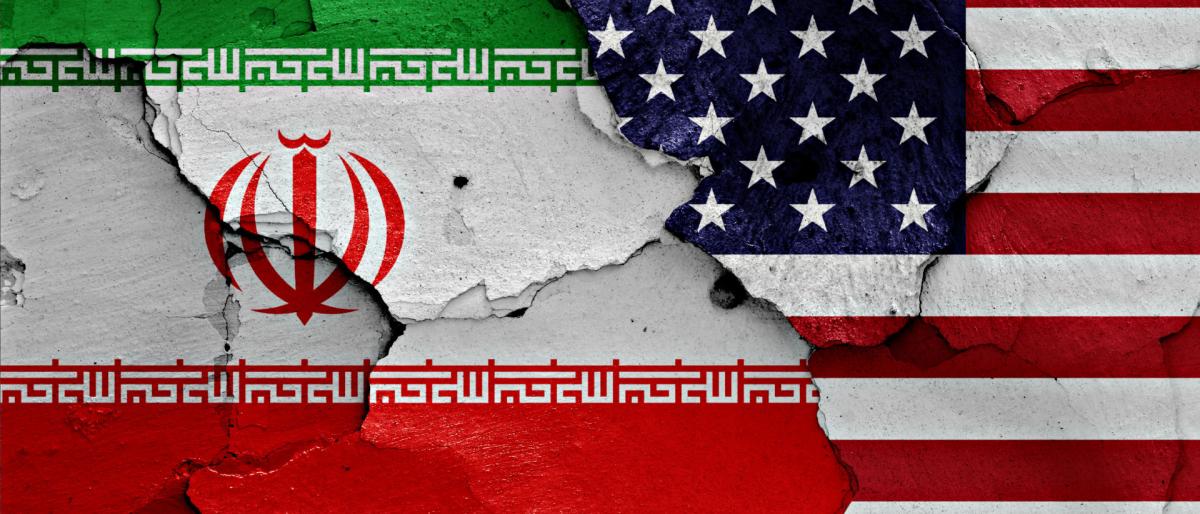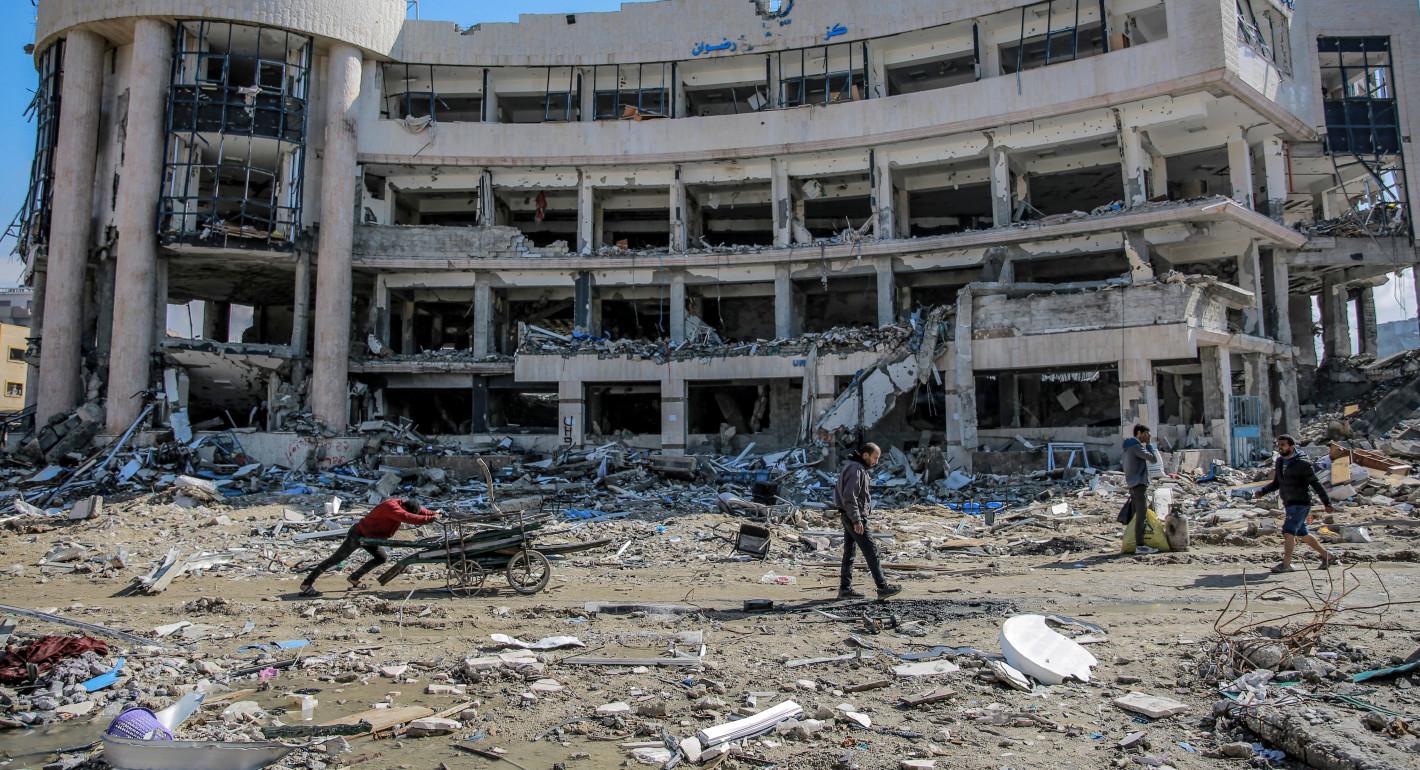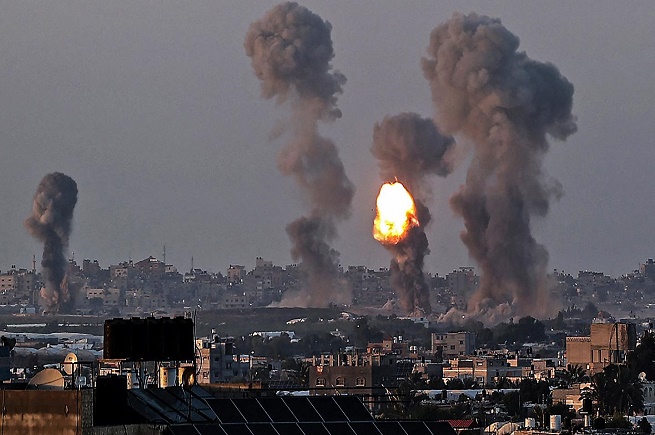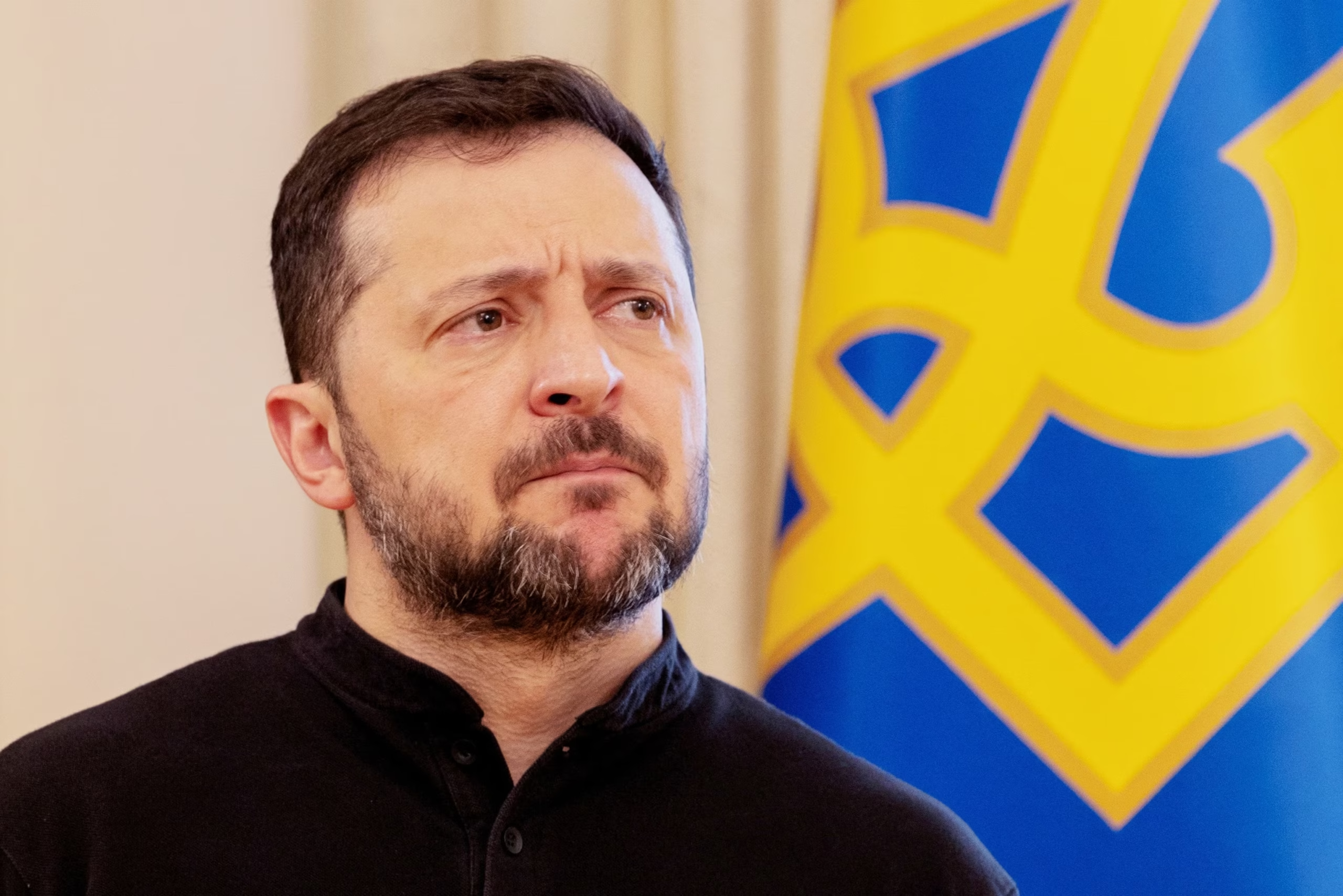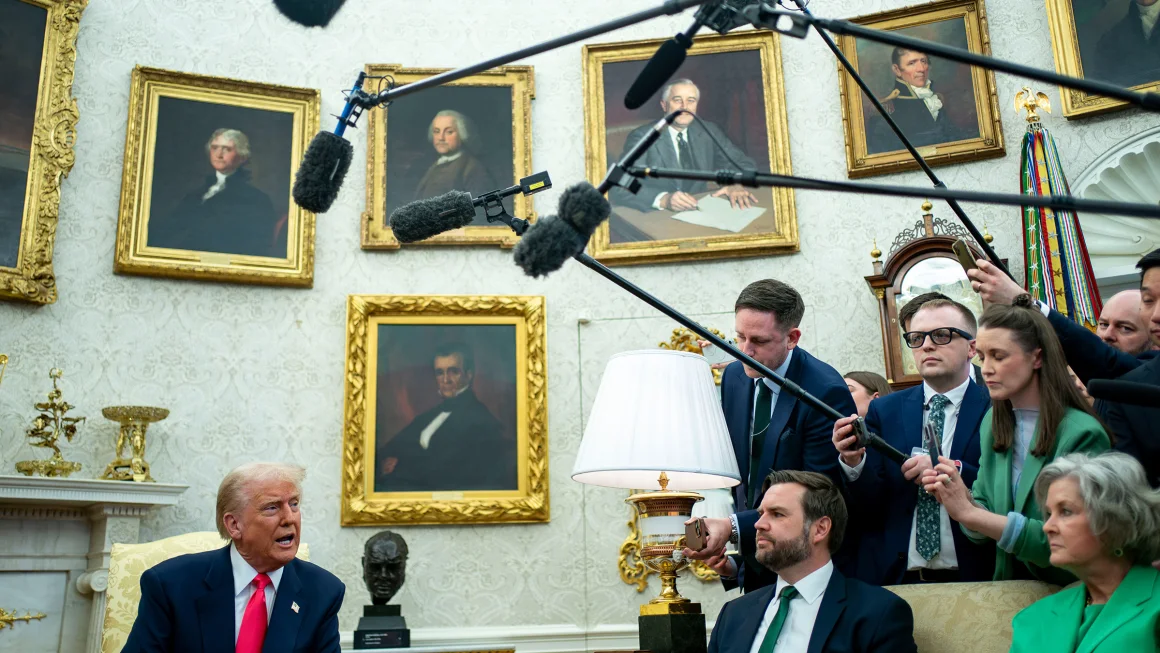
As President Donald Trump continues his efforts to reshape the federal government, he is simultaneously transforming one of the most iconic spaces in American history: the Oval Office. Since returning to office nearly eight weeks ago, Trump has significantly altered the decor, tripling the number of paintings on the walls and filling shelves and surfaces with flags, statues, and ornaments. True to his long-standing style, gold is a dominant theme, with new gold vermeil figurines on the mantle, medallions on the fireplace, gold eagles on side tables, gilded Rococo mirrors on the doors, and even small gold cherubs imported from Mar-a-Lago adorning the pediments above the doorways. Even the remote control for the hallway television is wrapped in gold.
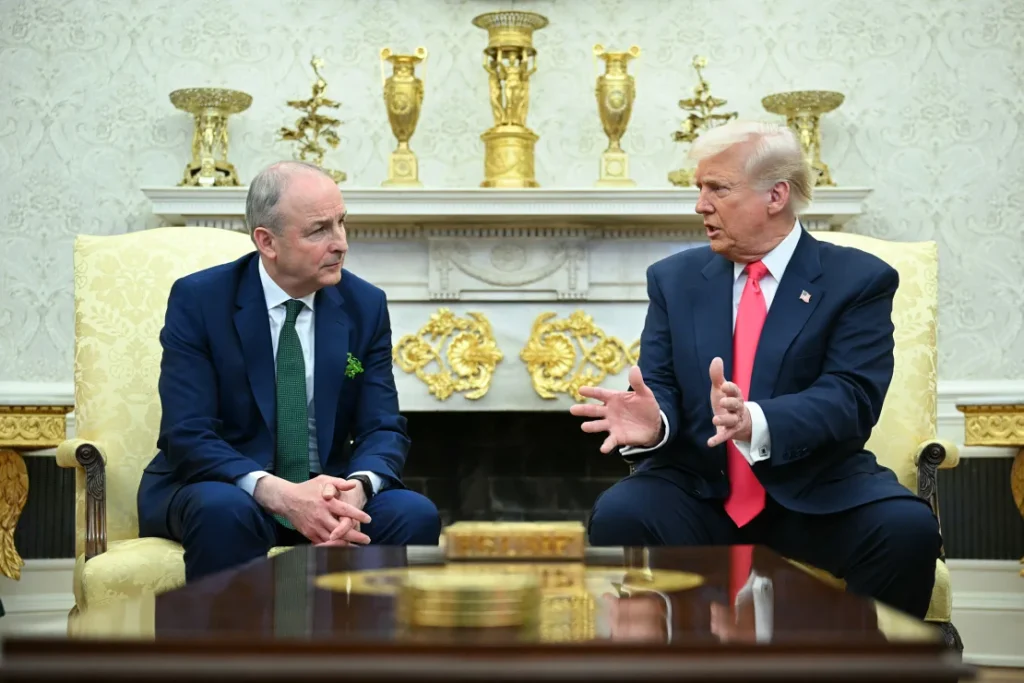
Trump meets with Irish Taoiseach Micheal Martin in the Oval Office. Behind them are recently added gold medallions on the fireplace and gold vermeil figurines on the mantle.
Mandel Ngan/AFP/Getty Images
Trump has reportedly considered adding a chandelier to the Oval Office, according to sources familiar with his plans, though this idea now seems unlikely. The overall effect is a White House that increasingly resembles Trump’s South Florida estate. Plans are also underway to revamp the Rose Garden, with work expected to begin soon. Trump envisions paving over the grass to create a patio-style seating area, similar to the one at Mar-a-Lago where he often hosts guests. He recently reviewed these plans with White House curators.
Trump has shared his vision for the outdoor space, originally designed by First Lady Ellen Wilson, with visiting heads of state as they stroll along the South Portico. On the South Lawn, he hopes to build a new ballroom for state dinners, modeled after the one at Mar-a-Lago, which itself was inspired by the Hall of Mirrors at Versailles. Trump has reviewed multiple blueprints for the project, tweaking designs and showcasing them to visitors. While he has long claimed he would fund the construction himself—even offering to build it during the Obama administration—it remains unclear whether the project will move forward on the historic grounds.
“It keeps my real-estate juices flowing,” Trump recently told The Spectator about the potential renovations. “But it’ll be beautiful.”
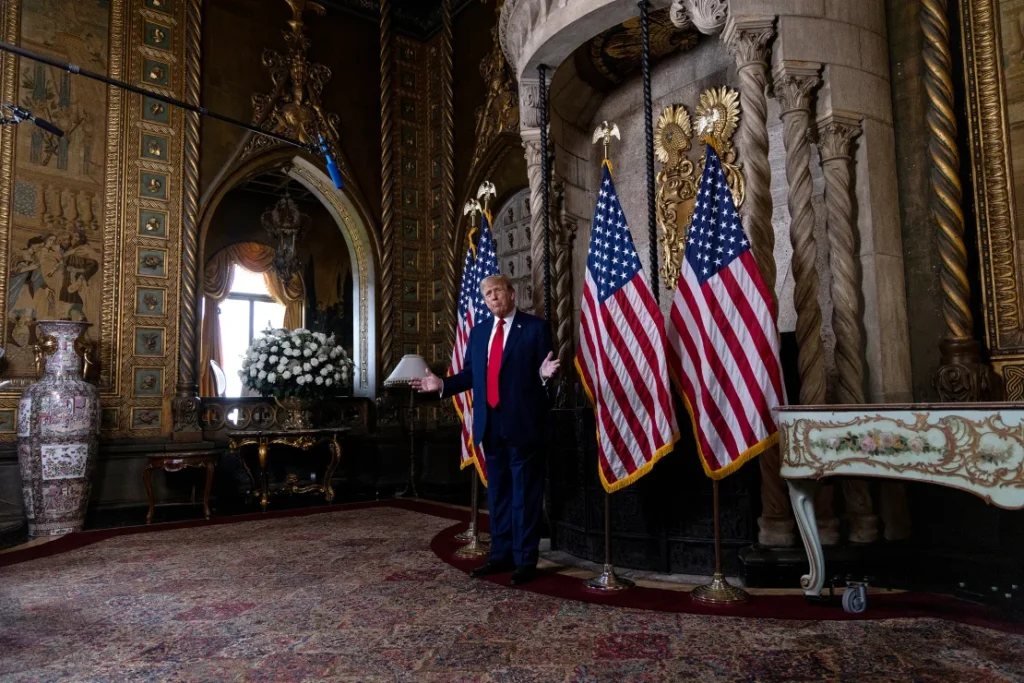
Trump speaks in the library at Mar-a-Lago on March 4, 2024, in Palm Beach, Florida.
Alon Skuy/Getty Images
The Oval Office has become a distinctly Trumpian workspace, filled with far more objects, curiosities, and art than those of his predecessors. Known for his aversion to minimalism, Trump appears most comfortable surrounded by trophies, memorabilia, and decorative items. He has always viewed his office as both a workplace and a showplace. His former corner suite on the 26th floor of Trump Tower was similarly cluttered with collectibles, framed photographs, and magazine covers. While the Oval Office is more orderly, particularly his desk, it still reflects the opulent style that has defined his career.
Every change to the Oval Office, no matter how small, is made at Trump’s direction, according to aides, as he seeks to remake the space to his liking. Since his return two months ago, the Oval Office has become one of the most visible rooms in the White House. It serves as the backdrop for meetings with foreign leaders, including the notably tense encounter with Ukrainian President Volodymyr Zelensky, as well as Cabinet swearing-in ceremonies and near-daily press briefings.
“Oh, what a great feeling,” Trump said on Inauguration Day, sitting behind the Resolute Desk when asked how it felt to return to the Oval Office. “One of the better feelings I’ve ever had.”
Trump typically arrives in the West Wing mid-morning, after spending hours on the phone from his residence starting as early as 6 a.m. He often calls aides or allies to discuss news, plans for the day, or his latest observations. His staff expects him in the Oval Office by 10 or 11 a.m., where he now enters a space that feels more like a packed gallery showroom than a traditional presidential office.
Trump has personally selected the portraits that adorn the walls, reviewing countless catalogues from the national collection to choose which predecessors or statesmen he wants to display. He prefers darker frames, consistent with the decor at his other properties. In total, he has hung nearly 20 paintings in the Oval Office, far more than his predecessors. For comparison, Joe Biden had six portraits, while Barack Obama displayed only two—Abraham Lincoln and George Washington—alongside modern paintings like two Edward Hopper works on loan from the Whitney Museum.
A large oil portrait of Ronald Reagan now occupies a prominent spot to Trump’s left as he sits at his desk. Across the room, a new, imposing portrait of George Washington by Charles Willson Peale from 1776 hangs above the fireplace, replacing the smaller painting that was there when Trump first took office. The walls are nearly covered with oil portraits of founding fathers and former presidents, including Thomas Jefferson, Benjamin Franklin, Lincoln, Andrew Jackson, Franklin D. Roosevelt, and James Polk, all seemingly competing for space.
While many presidents have found the White House confining, Trump frequently praises its beauty and grandeur, particularly the Oval Office. Unlike his predecessors, who often held meetings in the Roosevelt or Cabinet rooms, Trump spends most of his day in the Oval Office and its adjoining spaces, including a small dining room.
So far, the changes during this term have focused on decor. However, during his first term, Trump oversaw a $1.75 million renovation of the Oval Office and other West Wing rooms, completed while he was on a summer break at his club in Bedminster, New Jersey. “We found gold behind the walls, which I always knew. Renovations are grand,” Trump told TIME magazine at the time. “Remember how hard they worked? They wanted to make me happy.”
Even as he approaches the two-month mark of his return to power, Trump continues to add new pieces of decor and memorabilia to the Oval Office. Some items rotate, while others appear to be permanent fixtures. Behind his desk sits a shiny golden replica of the FIFA World Cup Trophy, known as the Jules Rimet Trophy. Trump often discusses the 2026 World Cup, which will be held across North America, with most matches taking place in the U.S.
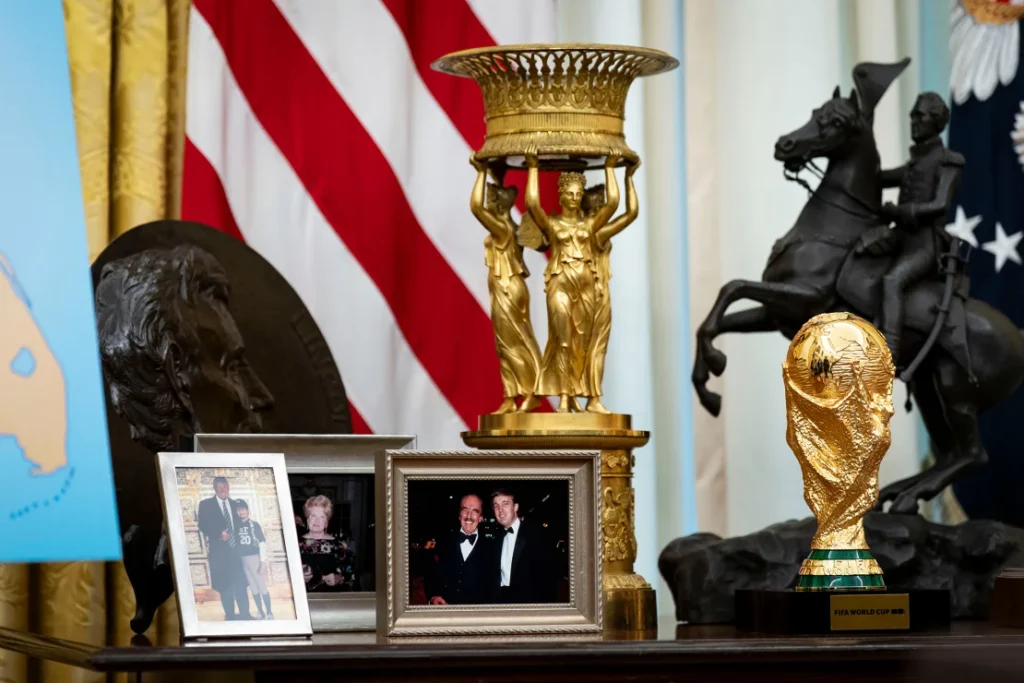
Deputy White House Chief of Staff Dan Scavino, one of Trump’s longest-serving aides, occasionally shares updates on the president’s changes to the Oval Office. “Every president has a right to decorate the Oval Office,” a former White House official who has worked for both Democratic and Republican administrations told CNN. “But his décor is so weirdly un-presidential, it’s more king-like.”
Trump has removed some of the room’s more iconic features, such as the tufts of Swedish ivy that once sat above the fireplace. These plants were descended from cuttings gifted to John F. Kennedy by the Irish ambassador to the U.S. In their place, seven gold artifacts now line the mantle, flanking a tall empire-style centerpiece. Simple wooden side tables have been replaced with marble-topped consoles featuring gilded eagles supporting bronze busts of Martin Luther King Jr. and Winston Churchill.
Photographs, including one of Trump’s mother, cover a table behind his desk. The Resolute Desk, a gift from Queen Victoria crafted from timbers of an Arctic exploration vessel, was recently sent for refurbishment, temporarily replaced by a smaller desk. Nearby, a placard displaying the body of water Trump has renamed the “Gulf of America” sits permanently on an easel. Gold cups are displayed in recesses above the windows and along the walls.
A heavy gold paperweight with the presidential seal and the word “TRUMP” engraved on it sits on the coffee table, occasionally used by guests as a coaster. And there may be more changes to come. Trump often spends weekends at Mar-a-Lago and frequently returns to the White House with new showpieces for the Oval Office or other prominent spaces.

